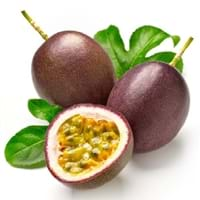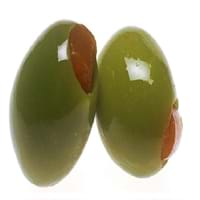Health Benefits
Asthma treatment, Heart care, Regulates Blood Sugar, Muscle pain relief, Reduces nervous tension
Cancer prevention, Helps in cartilage regeneration, Prevents macular degeneration, Treatment of alzheimer's disease
General Benefits
Boosts immune system, Controls blood pressure, Digestive aid, Fights against infections, Helps in weight loss
Anti oxidant properties, Anti-inflammatory properties, Boosts immune system, Controls blood pressure, Digestive aid, Maintains healthy cholesterol level
Skin Benefits
Anti-aging benefits, Skin revitalization
Hydrates skin, Skin rejuvenation, Treatment of skin diseases
Hair Benefits
Protects hair
Acts as moisturizer, Good conditioner, Regulates hair growth
Allergy Symptoms
Anaphylaxis, Breathing difficulty, Decrease in blood pressure, Dizziness, Skin rash, Swelling of face, Swelling of mouth, tongue or lips
NA
Side Effects
Stressed heart, Nausea, Vomiting, Possibly unsafe during pregnancy
Affects blood glucose levels, Dizziness, Stomach pain
Best Time to Eat
As a snack in the late afternoon, Don't consume at night and before bed, Morning time (before lunch), Strictly avoid empty stomach
Hardly eaten raw, Olive oil is consumed for many purposes.
Vitamin B5 (Pantothenic Acid)
Not Available
Vitamin C (Ascorbic Acid)
Vitamin K (Phyllochinone)
Calories in Fresh Fruit with Peel
Not Available
Calories in Fresh Fruit without Peel
Not Available
Calories in Frozen Form
Not Available
Not Available
Season
All seasons
Spring, Summer
Varieties
Australian Purple, Common Purple, Kapoho Selection, Pratt Hybrid, University Selection No. B-74, Waimanalo Selection and Yee Selection
Manzanillo, Sevillano, Mission, Ascolano, Barouni, Gordal, Rubra and Picholine
Color
Purple, Yellow
Black, Green, Purple, Yellow
Inside Color
Yellow
Brown
Origin
Argentina, Brazil, Paraguay
Eastern Mediterranean Region
Grows on
Not Available
Trees
Soil Type
Sandy loam
Well-drained
Climatic Conditions
Frost free, Sunny, Warm
Warm to hot climate
Facts about
- Passion fruit tree can grow up to 20 feet in a year.
- More than 200 species of passion fruit are found near Amazon river.
- Oil extracted from its seeds is used in various cosmetics.
- In ancient Greece, 1st eye shadow was made by adding olive oil in ground charcoal.
- The most expensive form of olive oil is Extra Virgin.
- Largest type of olive tree is known as donkey tree & smallest one is called bullet.
Top Producer
Brazil
Spain
Other Countries
Colombia, Ecuador, Indonesia, Kenya, Peru
Algeria, Egypt, Greece, Italy, Morocco, Portugal, Syria, Tunisia, Turkey
Top Importer
Brazil
United States of America
Top Exporter
Ecuador
Italy
Botanical Name
Passiflora edulis
Olea europaea
Synonym
Passiflora edulis f. edulis or Passiflora edulis f. flavicarpa
Not Available
Subkingdom
Tracheobionta
Tracheobionta
Division
Magnoliophyta
Magnoliophyta
Class
Magnoliopsida
Magnoliopsida
Subclass
Dillenhidae
Rosidae
Order
Malpighiales
Lamiales
Family
Passifloraceae
Oleaceae
Species
P. edulis
O. europaea
Generic Group
Passion Flower
Olive
Difference Between Passionfruit and Olive
We might think that Passionfruit and Olive are similar with respect to nutritional value and health benefits. But the nutrient content of both fruits is different. Passionfruit and Olive Facts such as their taste, shape, color, and size are also distinct. The difference between Passionfruit and Olive is explained here.
The amount of calories in 100 gm of fresh Passionfruit and Olive with peel is Not Available and 115.00 kcal and the amount of calories without peel is 97.00 kcal and Not Available respectively. Thus, Passionfruit and Olive belong to and category.These fruits might or might not differ with respect to their scientific classification. The order of Passionfruit and Olive is Malpighiales and Lamiales respectively. Passionfruit belongs to Passifloraceae family and Olive belongs to Oleaceae family. Passionfruit belongs to Passiflora genus of P. edulis species and Olive belongs to Olea genus of O. europaea species. Beings plants, both fruits belong to Plantae Kingdom.









